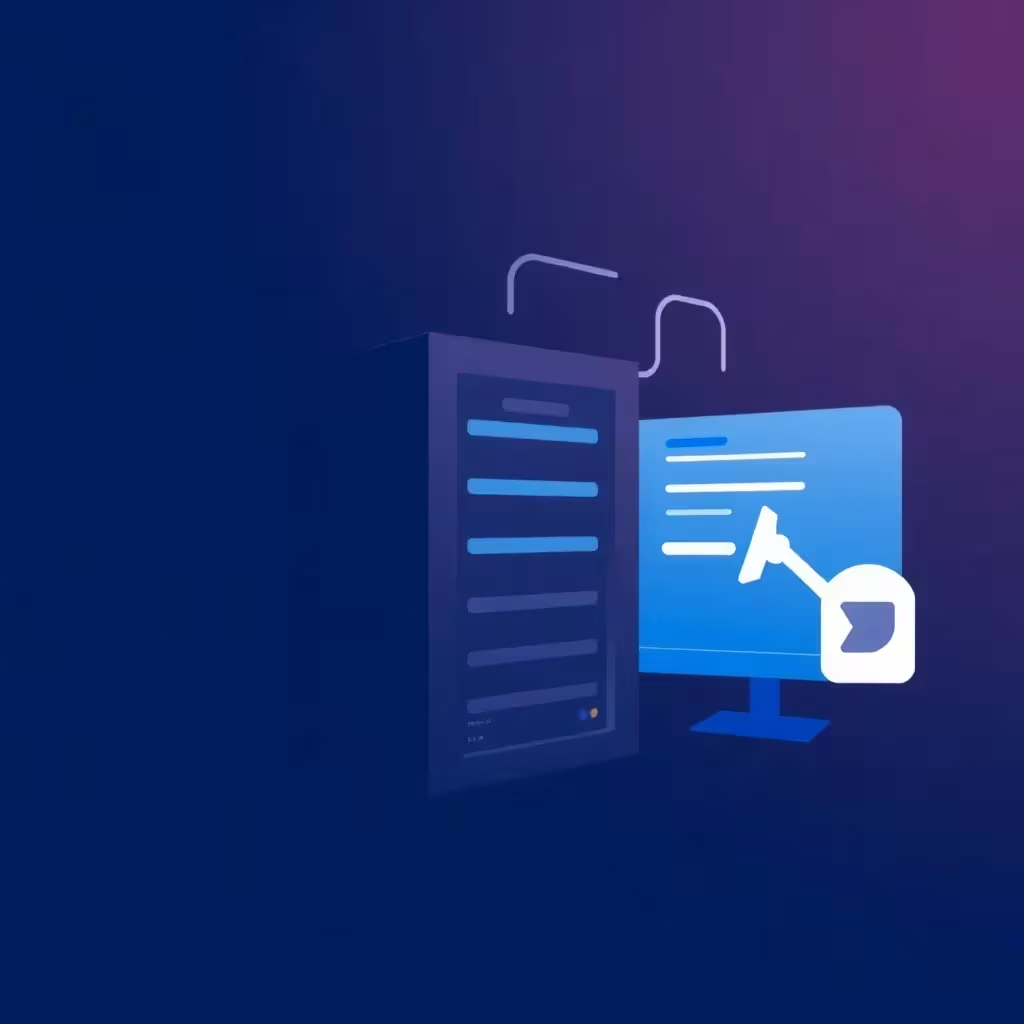Introduction to serverless computing
Serverless computing has become one of the most innovative and promising concepts in cloud technology in recent years. This technology promises to fundamentally change the way companies develop, deploy and scale their applications. But what exactly is behind this term and what impact does it have on the modern IT landscape?
What is serverless computing?
Serverless computing, also known as Function as a Service (FaaS), is a cloud computing execution model in which the cloud provider manages the infrastructure dynamically and allocates resources as required. Contrary to the misleading term "serverless", servers are actually used here. The key difference is that developers no longer have to worry about managing and scaling these servers.
In a serverless environment, developers write their code in the form of functions that are triggered by certain events. These functions are executed in containers that the cloud provider starts and stops automatically as required. This eliminates the need to keep servers available around the clock, which can lead to significant cost savings.
Advantages of serverless computing
Automatic scaling
Automatic scaling is a key advantage of serverless computing. The system dynamically adapts resources to current demand so that applications run smoothly even during sudden load peaks. This allows companies to concentrate on developing their core functionalities without having to worry about the underlying infrastructure.
Cost savings
The cost structure of serverless solutions is another attractive aspect. Instead of paying for permanently running servers, costs are only incurred for the resources actually used. This makes serverless particularly interesting for applications with fluctuating workloads or for start-ups that want to scale their infrastructure cost-effectively. In addition, operating costs are significantly reduced as maintenance and infrastructure management are handled by the cloud provider.
Rapid development and agility
Serverless computing also offers advantages in terms of development speed and agility. As developers no longer have to worry about the infrastructure, they can focus entirely on writing code. This often leads to shorter development cycles and faster time-to-market for new features and applications. The increased agility enables companies to react faster to market changes and develop innovative solutions.
Challenges and disadvantages
Cold Start
Despite the many advantages, there are also some challenges and potential disadvantages when using serverless computing. One of these is the so-called "cold start", where the first execution of a function after a period of inactivity can lead to delays. This can be particularly problematic for time-critical applications, as latency times are increased and the user experience could be impaired.
Vendor lock-in
Another aspect to consider is the potential dependency on a specific cloud provider, also known as vendor lock-in. As each provider offers its own serverless platforms and tools, switching to a different provider can involve considerable effort. Companies should therefore carefully consider which providers best meet their requirements and how flexible their serverless solutions can be designed to facilitate future vendor changes.
Monitoring and debugging
Monitoring and debugging serverless applications can also be challenging as developers have less insight into the underlying infrastructure. This often requires specialized tools and approaches for monitoring and troubleshooting. However, effective monitoring is critical to ensure the performance and reliability of serverless applications and to quickly identify and resolve potential issues.
Data protection and security
Data protection and security are other important aspects to consider when implementing serverless solutions. Although cloud providers typically implement robust security measures, organizations must ensure that their data and applications comply with applicable data protection regulations. This includes complying with data protection laws such as the GDPR as well as implementing additional security measures to ensure the integrity and confidentiality of data.
Application areas of serverless computing
Backend services for mobile and web applications
In practice, serverless computing is used in various areas. One common area of application is backend services for mobile and web applications. Here, serverless functions can be used for authentication, data processing or sending push notifications, for example. These functions enable developers to create fast and scalable backend solutions without having to worry about the underlying infrastructure.
Data processing and analysis
Serverless also offers interesting possibilities in the area of data processing and analysis. Large volumes of data can be processed efficiently and cost-effectively without the need to maintain a permanent infrastructure. Serverless architectures enable companies to analyze data in real time and gain valuable insights, which supports informed decision-making and increases operational efficiency.
IoT applications
IoT applications also benefit from serverless architectures. The processing of sensor data or the control of IoT devices can be realized flexibly and scalably via serverless functions. This enables cost-efficient management of large numbers of IoT devices and rapid adaptation to changing requirements, thereby improving the performance and reliability of IoT systems.
Chatbots and virtual assistants
Chatbots and virtual assistants are another area of application. Here, serverless functions can be used to process natural language and generate responses without the need for servers to be constantly available. This enables the scalable and cost-efficient provision of intelligent communication solutions that are available anytime and anywhere.
Future developments in serverless computing
Edge Computing
The future of serverless computing promises further exciting developments. As the technology matures, more and more complex applications can be implemented on serverless platforms. One interesting development is the concept of "edge computing", where serverless functions are executed closer to the end user to reduce latency and improve performance. This could be particularly important for applications with high real-time requirements, such as online gaming, real-time data analysis or autonomous systems.
Standardization of serverless technologies
The standardization of serverless technologies is another important trend. Initiatives such as the Cloud Native Computing Foundation (CNCF) are working to develop open standards for serverless computing, which could improve interoperability between different platforms and reduce vendor lock-in. Greater standardization would make it easier for companies to deploy serverless solutions flexibly and across platforms, further increasing the attractiveness and accessibility of the technology.
Use of artificial intelligence and machine learning
Another significant trend is the integration of serverless computing with other cloud services and technologies such as artificial intelligence (AI) and machine learning (ML). By combining serverless architectures with AI and ML technologies, companies can develop intelligent and automated applications that react to data in real time and continuously learn and improve. This opens up new opportunities for the development of innovative solutions in areas such as predictive analytics, personalized customer interactions and autonomous systems.
Getting started with serverless computing
Step-by-step introduction
For companies planning to get started with serverless computing, it is important to take a step-by-step approach and test the technology in smaller, non-critical projects first. This makes it possible to gain experience and identify potential challenges at an early stage. A gradual introduction reduces the risk and makes it easier to adapt to the new development and operating processes associated with serverless computing.
Architectural planning
Careful planning of the architecture is also crucial. Serverless applications often require a rethink in terms of application design, with a focus on loosely coupled, event-driven architectures. This means that applications are divided into independent functions and services, each performing specific tasks and communicating with each other through APIs or message streams. Such an architecture promotes the flexibility and scalability of applications and facilitates maintenance and further development.
Choice of cloud provider
Choosing the right cloud provider plays an important role. Factors such as the available features, pricing, scalability and integration with existing systems should be carefully weighed up. The leading providers in the serverless computing sector include Amazon Web Services (AWS) with Lambda, Microsoft Azure with Azure Functions and Google Cloud with Cloud Functions. Companies should compare the strengths and weaknesses of the various providers and choose the one that best suits their specific requirements and objectives.
Training and further education
Last but not least, the training and further education of the development team is a decisive factor for the success of serverless projects. Developing for serverless environments often requires new skills and mindsets that should be fostered. This includes learning best practices for writing and testing serverless functions, understanding the underlying cloud infrastructure and using specialized tools for monitoring and troubleshooting.
Conclusion
To summarize, serverless computing is a promising technology that has the potential to fundamentally change the way we develop and operate applications. It offers companies the opportunity to operate more flexibly, cost-effectively and innovatively. At the same time, it presents developers and IT teams with new challenges and requires a rethink in terms of architecture and development practices.
The future of serverless computing promises further exciting developments and innovations. As the technology matures and is increasingly adopted by companies of all sizes, serverless computing will undoubtedly play an important role in the future IT landscape. Companies that get to grips with this technology at an early stage and exploit its potential can secure a decisive competitive advantage in the digital economy.



